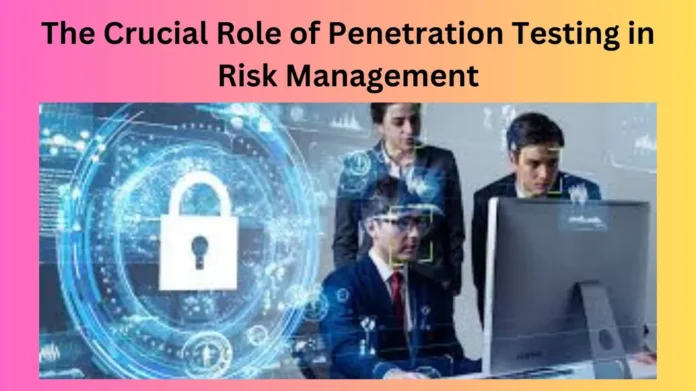In today’s fast-paced digital landscape, where data breaches and cyberattacks are becoming increasingly sophisticated, organizations face a constant battle to protect their valuable assets.
This is where penetration testing, often referred to as ethical hacking, comes into play. In this article, we will delve into the world of penetration testing and explore its pivotal role in risk management.
So, grab your digital magnifying glass, and let’s uncover the secrets of this cybersecurity superhero.
Understanding Penetration Testing
Before we dive deeper, let’s clarify what penetration testing entails. Essentially, it’s a methodical process of probing a computer system, network, or application to identify vulnerabilities that could potentially be exploited by malicious actors.
The Nuts and Bolts of Penetration Testing
Penetration testing involves simulating real-world cyberattacks to assess an organization’s security posture comprehensively. It’s not just about identifying weak points but also evaluating the overall effectiveness of existing security measures.
Why is Penetration Testing Essential for Risk Management?
Proactive Risk Identification
Imagine your organization as a fortress, and penetration testing as the guard who constantly tries to breach its defenses. By actively searching for vulnerabilities, you can identify risks before they are exploited by malicious hackers. This proactive approach is a cornerstone of risk management.
Real-world Simulation
Penetration testing provides a real-world simulation of potential cyber threats. This allows organizations to understand how vulnerabilities could be exploited and the potential impact on their operations.
Compliance and Regulation
Many industries are subject to specific cybersecurity regulations. Penetration testing can help ensure compliance with these regulations, thus reducing the risk of costly fines and legal consequences.
The Penetration Testing Process
Planning and Reconnaissance
The first step in penetration testing involves meticulous planning and information gathering. Testers need to understand the target thoroughly, just as an attacker would.
Vulnerability Analysis
Once the reconnaissance is complete, testers analyze the collected information to identify potential vulnerabilities. This phase involves both automated tools and manual testing.
Exploitation
Here, the ethical hackers attempt to exploit the identified vulnerabilities. The goal is not to cause harm but to demonstrate how an attacker could breach the system.
Reporting and Remediation
After the testing phase, a comprehensive report is prepared, detailing the vulnerabilities found and potential risks. This report helps organizations prioritize and address security weaknesses.
Benefits of Penetration Testing
Improved Security
By identifying and addressing vulnerabilities, penetration testing significantly improves an organization’s security posture. It’s like patching up holes in a ship to make it seaworthy.
Cost-effective Risk Mitigation
Detecting and fixing vulnerabilities before they are exploited is far more cost-effective than dealing with the aftermath of a cyberattack, including legal fees, reputation damage, and data recovery.
Enhanced Customer Trust
When customers know that a business takes its cybersecurity seriously, they are more likely to trust it with their sensitive information. Penetration testing can be a powerful trust-building tool.
Challenges of Penetration Testing
False Positives
One challenge in penetration testing is the possibility of false positives, where a vulnerability is flagged incorrectly, leading to unnecessary panic and resource allocation.
Scope Limitations
Defining the scope of a penetration test can be tricky. Leaving out critical areas can result in incomplete assessments, while overextending can be resource-intensive.
Conclusion
In a world where cyber threats are ever-evolving, penetration testing emerges as a vital ally in risk management. By proactively identifying vulnerabilities, simulating real-world attacks, and strengthening security measures, organizations can fortify their defenses and safeguard their valuable assets.
FAQs
1. Is penetration testing the same as a security audit?
No, they are different. A security audit is a more general assessment of security measures, policies, and compliance, while penetration testing focuses on actively probing for vulnerabilities.
2. How often should an organization conduct penetration testing?
The frequency of penetration testing depends on various factors, including the industry, regulatory requirements, and the rate of system changes. Typically, it’s advisable to perform tests at least annually, or after significant system changes.
3. Can penetration testing guarantee 100% security?
No, it cannot. Penetration testing reduces risks by identifying vulnerabilities, but it cannot eliminate all potential threats. It’s an essential part of a broader cybersecurity strategy.
4. Are there any legal considerations when conducting penetration testing?
Yes, ethical and legal considerations are crucial. Organizations should always obtain proper consent before testing systems, and testers must adhere to ethical guidelines and legal regulations.
5. Is penetration testing only for large enterprises?
No, penetration testing is beneficial for businesses of all sizes. Cybersecurity threats can target organizations of any scale, making it essential for small and medium-sized enterprises as well.
In conclusion, penetration testing is not just a security measure; it’s a strategic imperative in today’s digital landscape. It empowers organizations to stay one step ahead of cyber threats and ensure the safety of their data and operations. Embrace this proactive approach to risk management, and your organization will be better prepared to face the challenges of our interconnected world.















